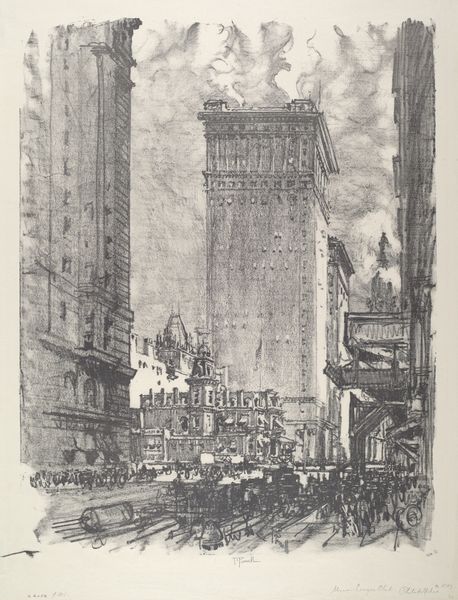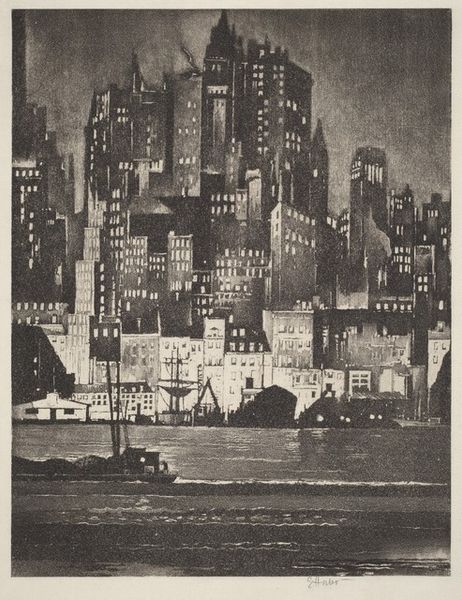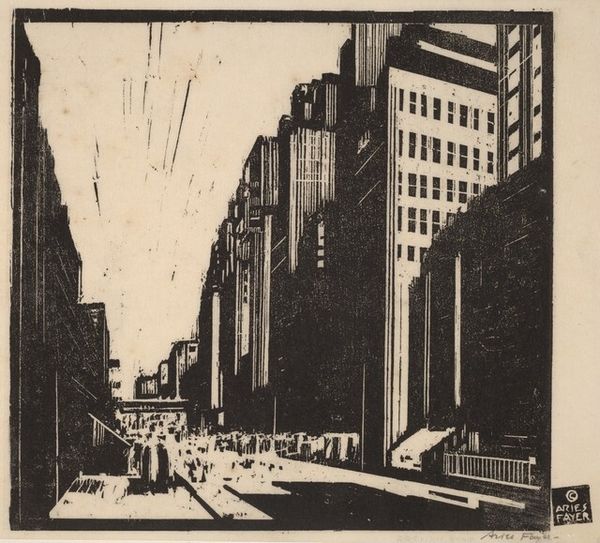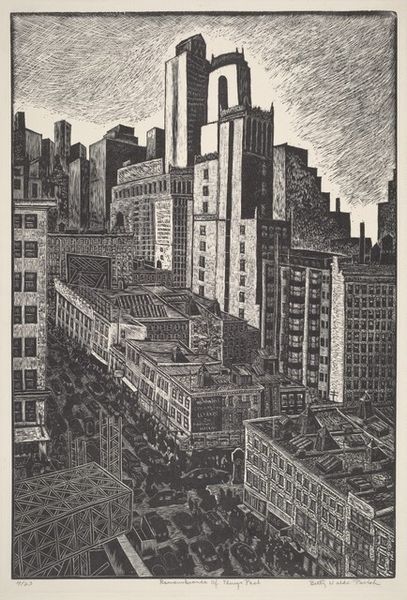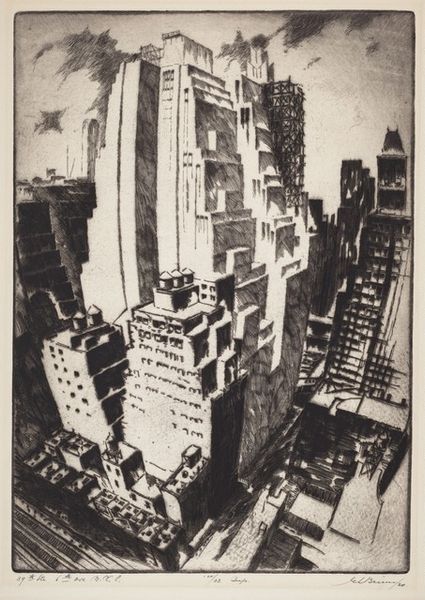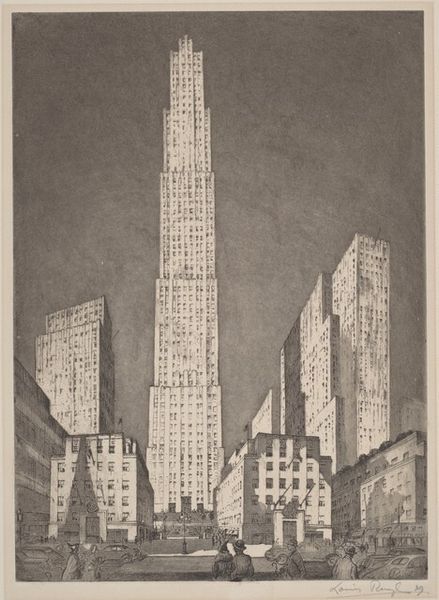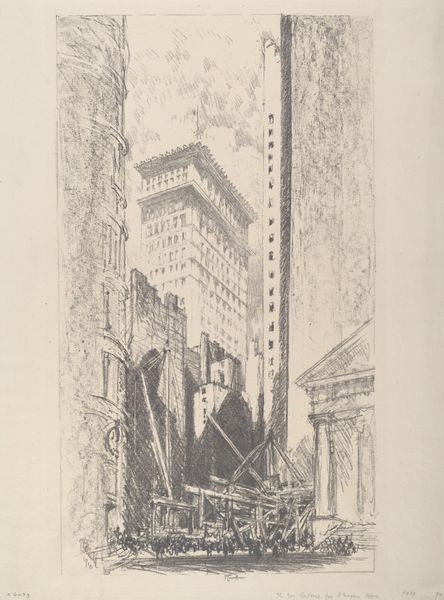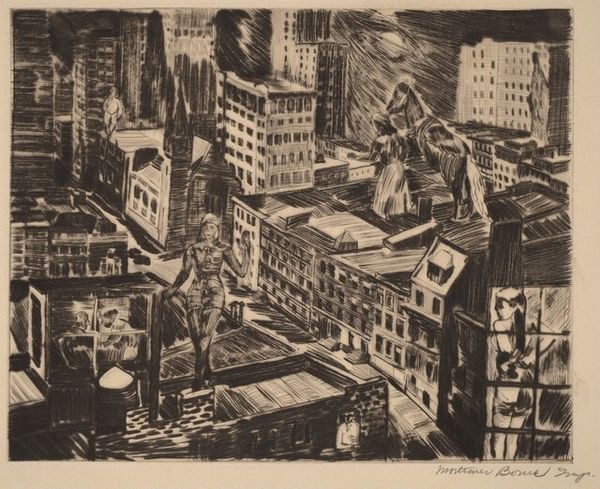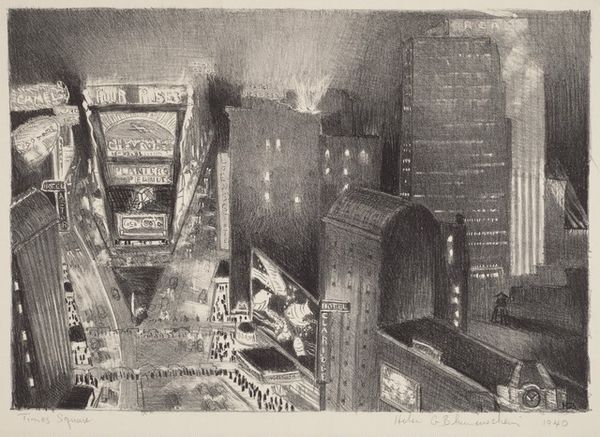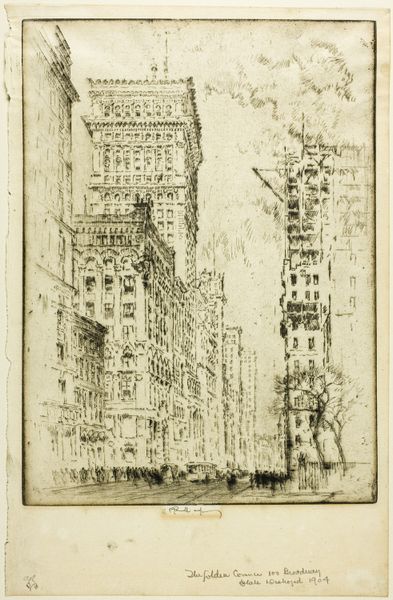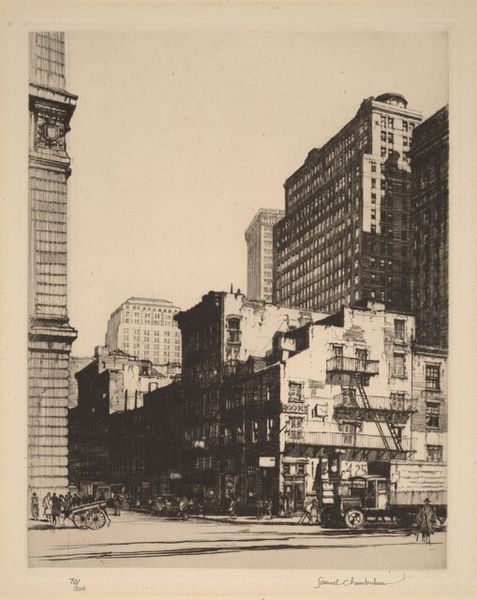
print, etching, graphite
#
pencil drawn
# print
#
etching
#
pencil sketch
#
charcoal drawing
#
pencil drawing
#
graphite
#
cityscape
#
modernism
#
realism
Dimensions: image: 250 x 160 mm sheet: 357 x 257 mm
Copyright: National Gallery of Art: CC0 1.0
Curator: Let’s discuss Esther Brock Bird's “Untitled (Columbus Circle)” from 1934. It's a print, a delicate etching rendered in graphite that captures a dynamic cityscape. Editor: The overwhelming impression is how stark and monumental everything feels, looming in the dim light of dusk, yet softened somehow by the medium itself. The surface shimmers! Curator: Absolutely, there's a palpable tension there. Considering the context, the 1930s, a period riddled with economic hardship and social upheaval, Bird’s cityscape operates on several symbolic levels. On the one hand, it depicts monumental signs of burgeoning capitalism such as General Motors towering over everything, yet on the other, we get a view into ordinary life in an urban center. The figures circulating at the traffic roundabout, the buses going from place to place—the city at work! Editor: Yes, look at the marks; she's built this world through line. It strikes me how her printmaking foregrounds labor and reproducibility in the age of mass production. Graphite, etching, they demand time, craft, skill to render this industrializing space. How does the role of women fit in here? Curator: A great question! Female artists, like Bird, were finding ways to document and engage with rapid industrial and social transformations during the early twentieth century. She gives Columbus Circle a subtle, subjective lens. I wonder if, for her, the intersection symbolizes both hope and the alienation of modern existence. The work opens into rich possibilities for feminist and materialist discourses. Editor: The cityscape seems to become an intersection point, literally in the artwork, that captures a complex negotiation, not only of social identity and location, but of industrial and artistic creation too. There is a distinct tension in these crisscrossing modes. Curator: Indeed, viewing this etching now provides a historical lens for examining gendered dimensions in the face of an emerging urban landscape. Editor: The material becomes a space of intersectionality, one shaped by production, representation, and lived experience. The artist makes that visible for us.
Comments
No comments
Be the first to comment and join the conversation on the ultimate creative platform.

